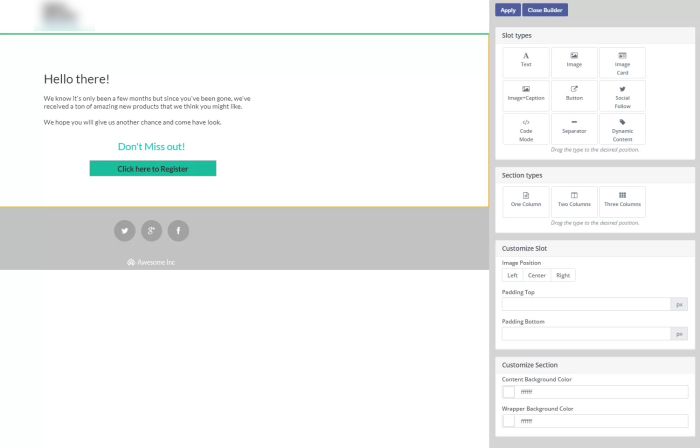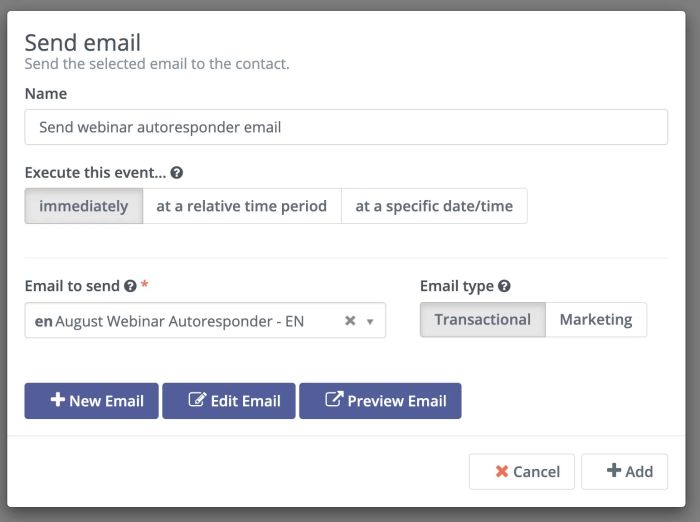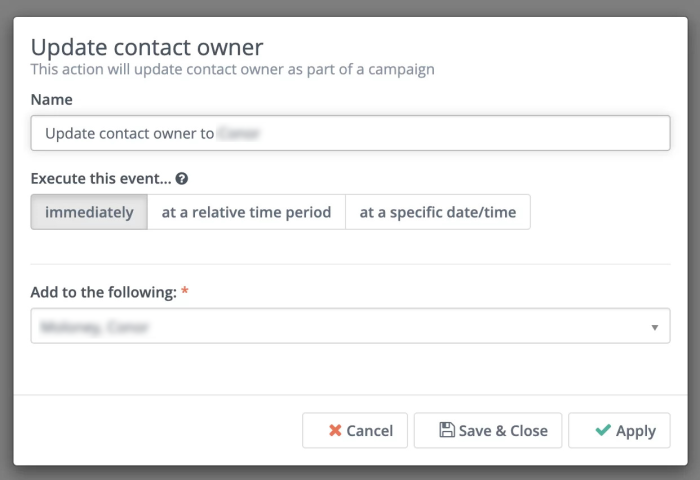Communication is key for schools looking to connect with potential students and build meaningful relationships. In fact, great communication and a deep understanding of your target audience are two things that can help your school boost its enrollment numbers. To do either of them justice in the world of digital marketing, your school will need to rely on a CRM designed for education.
Customer Relationship Management (CRM) software drives better recruitment results through communication, automation, tracking and reporting. Still, most CRMs are not suited to the unique situation of education – the enrollment funnel instead of the sales funnel. Here’s an in-depth look into CRMs for schools and the features you should watch out for when choosing a CRM for your school!
The Benefits of Using an Education CRM for Your School
CRM software is designed to help organizations manage their contacts list, ultimately supporting marketing and sales efforts. This software can provide valuable insights, integrating with various communication channels – like social media and email – to help organizations strengthen their marketing strategy.
In the context of schools, this software can be extremely valuable for student recruitment and can be used to manage a school’s enrollment funnel. It can help your admissions team nurture important relationships with leads and boost enrollment numbers by guiding prospects from one stage of the enrollment journey to the next. That’s because CRM for education can help schools manage communication with prospective and current students, as well as agencies, recruiters, alumni, and parents.
Since much of education marketing is done online, having a school CRM can be an important asset for your school. Key benefits include being able to:
- Build better relationships with prospects via lead nurturing
- Focus on quality leads through lead scoring
- Streamline the admissions process and supercharge productivity within your team
- Easily manage your school’s activities and track the success of your performance
1. A Strong Contact Management System to Organize Your School’s Network and Community
As a school, you interact with various contacts to meet your school’s objectives and boost enrollments. Your education CRM should make it easy for you to manage this list of contacts, giving you access to the information you need to nurture relationships with leads and applicants as well as agents and parent contacts.
A great feature to watch out for is importing new contacts into your system easily. Better yet, your CRM can make it so that contacts are automatically created when you receive new inquiries and applications. With HEM’s Mautic CRM, that is what your school can do. The platform is designed to serve schools and meet their needs, allowing them to:
- Construct detailed profiles of each contact
- Segment contacts for better targeting
- Simultaneously manage agent relations
Schools with much information about a prospect can navigate to the software’s contact builder to add a new contact. Here, you’ll encounter different fields to input information, going beyond the basic ones provided through the “Quick Add” option. These fields are divided into sections to give you a chance to flesh out your contact:

A Way to Understand How Prospects Move through Your School’s Admissions Funnel
It’s worth noting that this software can be self-sufficient, automatically recording new activity to help you better track your contacts’ enrollment journeys. Through filters and campaigns, you can automatically populate contacts into the correct stage and seamlessly apply your marketing efforts. From there, you can track your contacts and gain more insights into your conversion success rate.
Here, you’ll want to get an education CRM software that enables you to track your lead lifecycle and offers a lead scoring system to help your admissions team determine the perceived value that each lead represents to your school. In HEM’s Mautic CRM, you can use Mautic points for lead scoring, which allows you to identify and prioritize high-quality leads.
To get started with them, you’ll need to navigate to Custom Fields within the Mautic menu and add a new point action. This will pull up the following window, which allows you to name and describe the action, along with attributing a set number of points for it. You can also determine when these points will be administered by choosing an action from the drop-down menu:

Effective contact management is key as your school interacts with its community. Being able to quickly view a prospect’s details, communication history, lead score, and lifecycle stage can help you determine how far along they are in the enrollment journey.
Once you return to contact profiles in Mautic, you’ll be able to quickly access all of this information via three central menus: the contact information section, the contact activities section, and the lead status section—which are all automatically updated:

This insight can then be used to refine your marketing strategy. Depending on a prospect’s admissions stage, or any other parameter you see fit to use, you can segment your contacts and draft personalized messaging. As a result, your communication efforts will be much more impactful.
2. An Education CRM with a Variety of Channels for Impactful Messaging
Schools need an education CRM that features multichannel marketing tools. This allows you to create messaging across different platforms, producing content for CRM email marketing and SMS campaigns. By having multichannel marketing tools, you can also provide prospects with greater variety and allow them to choose their preferred method of communication.
Using email marketing tools in your CRM, you can work on email templates and build customized layouts to feature your content. The user interface is intuitive, giving you various options to craft the perfect message:

Similarly, choosing a CRM with SMS marketing capabilities means you can instantly send your prospects curated messages and receive notifications when they reply. You only need to navigate to “Text Messages” under the Channels section of your Mautic menu and add a new message. A window will appear so that you can organize and type out your message:

You can also use Mautic’s other channels, such as focus items and social monitoring, to refine your student recruitment efforts. By using focus items, you can build pop-up forms and notifications to generate more leads, promote special offers, or highlight important information. With social monitoring enabled, you can use your CRM as a tool for tracking hashtags and mentions on social media, keeping better tabs on your online community.
3. Campaign Capabilities that Elevate Your School’s CRM and Streamlines Recruitment
Campaigns are at the heart of an active digital marketing strategy. Schools looking to maximize their student recruitment efforts can use the campaign capabilities of their CRM to generate strong results. HEM Mautic’s Campaigns feature enables schools to create detailed automated workflows that trigger marketing and follow-up activities, assign tasks, manage your team’s workload, or do anything else you may need to streamline your student recruitment efforts.
This is where admissions CRM software with an automated communications feature can shine. You can use this feature to create email auto-responders and other automated email workflows, along with SMS campaigns that automatically send personalized messages to your contacts based on certain enrollment triggers. You can use the CRM to ensure that the right message is sent to the right audience at the right time—using carefully-timed intervals to maximize your messages’ impact. Below is an example of how this might look as you set it up in Mautic CRM:

An effective education CRM promotes the productivity of your team. For this reason, HEM’s Mautic CRM supports lead assignments, allowing you to automatically assign new contacts to your admissions team for effective follow-up. You can choose to match new contacts with members of your team based on a range of factors, including language or program of interest. This way, you rest easy knowing that the right person is handling the right prospect, thus streamlining your student recruitment process.
In Mautic, you’ll want to start by clicking “Launch Campaign Builder” and selecting “contact segment.” You can decide which segment you want to assign to a specific team member and then choose to “update contact owner.” Next, you’ll need to choose which contact owner to reference and click on apply, as shown below:

Pro Tip: You can use workflow triggers in Mautic to automatically update contact profiles, stages, and other attributes based on their interactions and responses to your marketing and follow-up efforts. This allows you to significantly improve your contact management.
Interested in giving HEM’s Mautic CRM a try? Our software is developed by CRM and marketing automation education experts and can give your school the boost it needs to improve student recruitment. Reach out to our team to learn more about Mautic and request a demo!
4. Customizable Components that Boost Lead Generation in Your School’s CRM
Schools with a CRM that allows them to create customizable components for marketing purposes are at an advantage. These components can help drive lead generation, making your prospects feel noticed and cared for.
One way of doing this with an education CRM is using dynamic content, which relies on personalization tokens and smart CTAs to personalize what is shown to leads depending on their profile. Another way is by creating assets, which are provided in HEM Mautic. These assets allow your school to add brochures, class schedules, videos, and other types of content to your CRM. Choosing to do so enables you to use this content as lead magnets, a type of offer that motivates prospects to share their contact details in exchange for access, boosting conversions and lead generation.
Below is an example of the details you can fill out to add assets to Mautic:

Your school can also get more out of its CRM if you’re able to integrate your website with the software. You can use your CRM components to create web forms that capture important information from your prospects and landing pages for your ad campaigns, events, and offers. You can customize these components and add elements of your school’s branding along with your own images and copy.
Example: In Mautic, your school has the option to choose from two different types of forms: campaign forms and standalone forms. Both are fully customizable, enabling you to collect the information you need from prospects when you need it:

When it comes to creating landing pages, your school can turn to Mautic’s template library

Once you select a template, you can modify the layout and content through an intuitive interface. Having this level of control over different assets in your CRM can help your school create consistent experiences for its prospects, seamlessly guiding them through the enrollment journey by driving conversions and generating leads.
5. Reporting Features that Allow Your School to Track Admissions Success
A CRM for private schools or any other educational institution needs to include strong reporting capabilities in order to make a big difference. That’s because CRM reports for schools provide valuable insights that reveal the success of your school’s admissions team, clueing you in on opportunities for growth and improvement while also helping you determine your key strengths.
HEM Mautic features a range of ready-made reports specifically designed for the education sector, making it easy for your school to track and measure important key performance indicators. They can also be used to measure the success of your lead generation efforts by channel and your admissions follow-up efforts. These reports include:
- Leads by stage, by source, by program
- Lead conversion
- Admissions activities summary
- Speed to lead
- Calls outcome, meetings outcome
- Lead Status
- Leads with no scheduled follow-ups
- Custom reports
Here’s an example of how the Leads by Stage report (first image) may appear compared to the Calls Outcome report (second image), both of which reveal different details pertaining to prospects and admissions efforts:


The first report provides an in-depth look into the leads your school managed to generate over a set period of time, revealing information about the stage they’re in, along with their program of interest and contact details. The second report presents a summary of calls made by each contact owner, revealing the outcomes in an easy-to-read table. This shows your team how many calls were connected and how many were ignored, among other valuable insights.
6. An Education CRM that is Both Highly Functional and Affordable
The best CRM for education is a CRM that factors in all the different tasks and functions involved in the student recruitment process. The key is to select an education CRM that is highly functional, supporting all of your school’s needs while also being affordable.
HEM’s Mautic CRM is notably more affordable for educational institutions than its alternative mainstream options, like HubSpot, despite having all the add-ons that a school typically requires. This makes it much cheaper and practical for schools, especially considering it can be integrated with other tools like a student portal. By combining Mautic CRM with a student portal, like HEM’s Student Portal and Virtual Admissions Assistant, you can create a seamless remote admissions experience that is worthwhile for both your prospects and your team.







